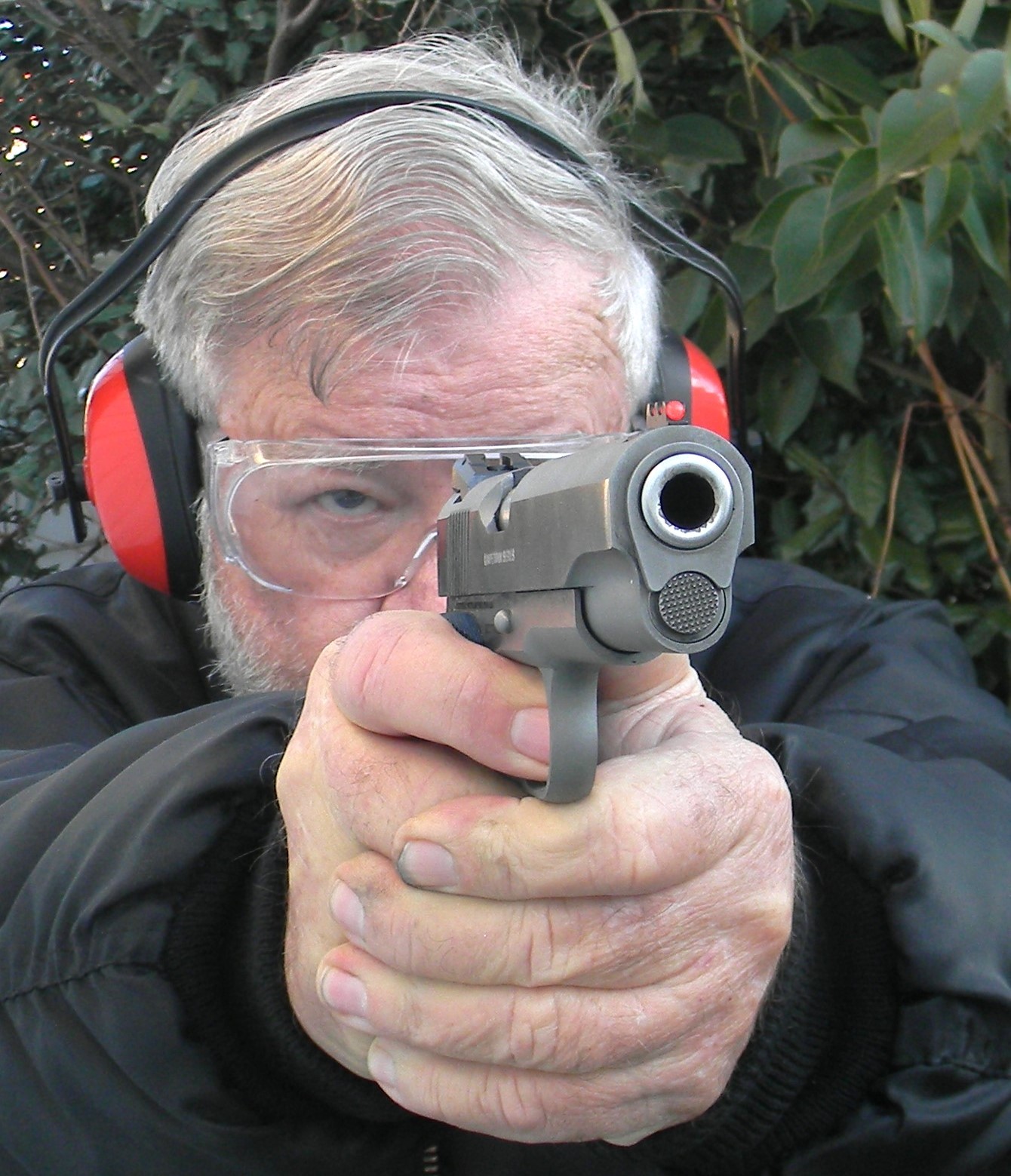
By R.K. Campbell | Contributing Editor
Colt introduced the Model 1911 pistol to the world in March 1911 following extensive testing.
The pistol was adopted by the United States Army on March 29 of that year and continued to serve in two world wars and many battles in between. While officially replaced in 1981 with the 9mm Beretta, the Model 1911 continues to serve in select units.
The Colt has continued to be the handgun by which all 1911 types are judged. While the Colt 1911 Government Model was designed as a fighting pistol, the 1911 began being developed as a competetion and target pistol for Camp Perry matches soon after World War One. The pistol has been improved gradually.
While the Model 1911 eventually became the finely tuned Gold Cup/National Match pistol, a modern Colt Competetion Model is more similar to early National Match pistols. The original National Match, built by Army gunsmiths, was a tuned Government Model with high visibility sights. Often these sights were fixed, and hand adjusted to the point of aim. Colt’s Competetion Model is a modern pistol well suited to personal defense, many types of competetion and service use.
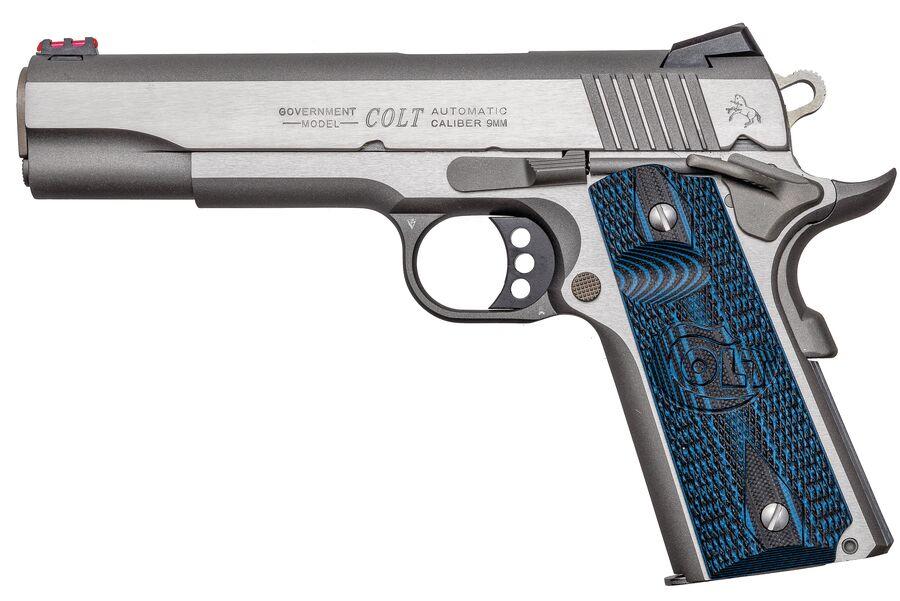
The Colt Competition pistol was introduced some years ago. The original featured the Colt Series 80 firing pin block. This drop safety keeps the firing pin locked until the trigger is pressed fully to the rear.
There is an opinion that the extra parts and plunger make a good trigger action more difficult with the Series 80. This is probably correct when tuning to the Nth degree. Just the same, I have enjoyed very good trigger actions with the Series 80. The new Colt is a Series 70, with no firing pin block. Drop safety is achieved by an extra strength firing pin spring.
Another change is that the pistol now features a red fiber optic front sight. The original featured a blue fiber optic sight to match the Colt’s blue tone G10 grips. The rear sight is a Novak low mount that is screw adjustable for elevation, but it isn’t any bulkier than the original Novak. The sight may be adjusted for windable by tapping the rear sight in its notch with a brass hammer or sight pusher. The trigger action is smoother than most 1911s with a number of examples tested breaking at 5.0 pounds or slightly less. The trigger features modest take up and the usual sharp reset of the 1911 trigger action.
These pistols are available in 9mm Luger and .45 ACP in both blue and stainless steel finishes. My trest pistol arrived in the typical Colt blue box. A single magazine is supplied. I would like two magazines with a thousand dollar pistol, but Colt 1911 magazines are readily available. The box includes a gun lock and spare fiber optics. Some prefer a green front sight. It is simple enough to replace the fiber optics and heat the ends for stability.
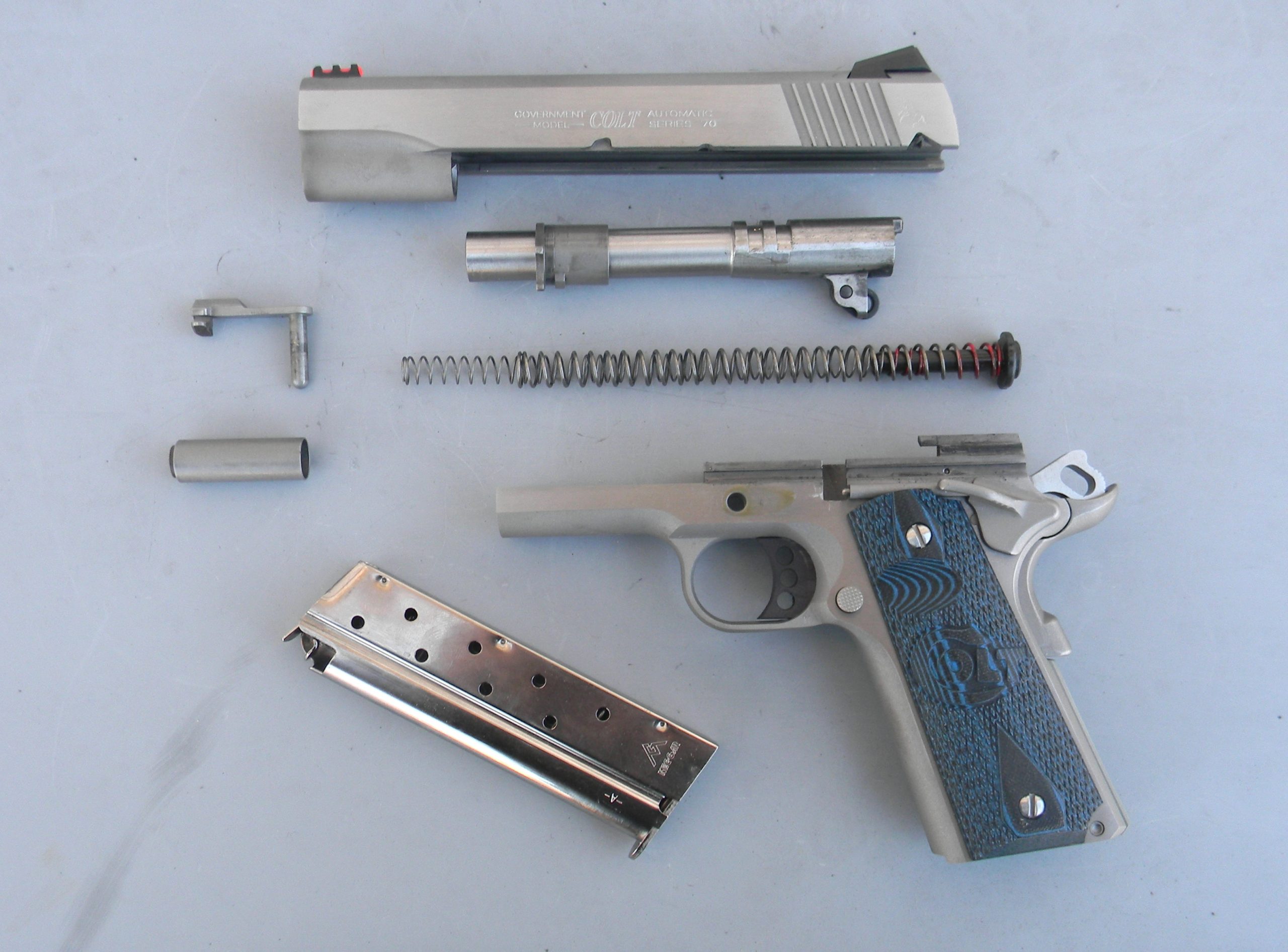
The adjustable trigger is properly set at the factory. (It isn’t adjustable for pull weight but for over travel.)
Left handed shooters are left out with this pistol. An aftermarket ambidextrous safety could easily be fitted but at greater expense.
The slide and magazine release are positive in operation. The 9mm example in stainless steel I have tested extensively shows excellent fitting and finish. G10 grips provide a good balance of adhesion and abrasion. The flat mainspring housing is nicely serrated, while the front strap isn’t checkered. However, I never felt as if I was not in control.
The pistol features a well-designed beavertail grip safety. This safety releases its grip on the trigger halfway into compression. This beavertail/memory groove safety helps keep the hand funneled into the firing grip. This thumbs-forward grip sometimes forms a pocket in the palm, bringing the palm off of the grip safety. The Colt beavertail type grip safety is a great help in this regard. The grip safety must be depressed to release the trigger for firing. A well deigned beavertail grip safety is an asset. The slide window/ejection port is properly scalloped for easy ejection of fired cartridge cases and unloading the pistol in administrative handling. A National Match barrel is well fitted at the locking lugs barrel bushing and barrel hood. Overall this is a very nicely put together 1911.
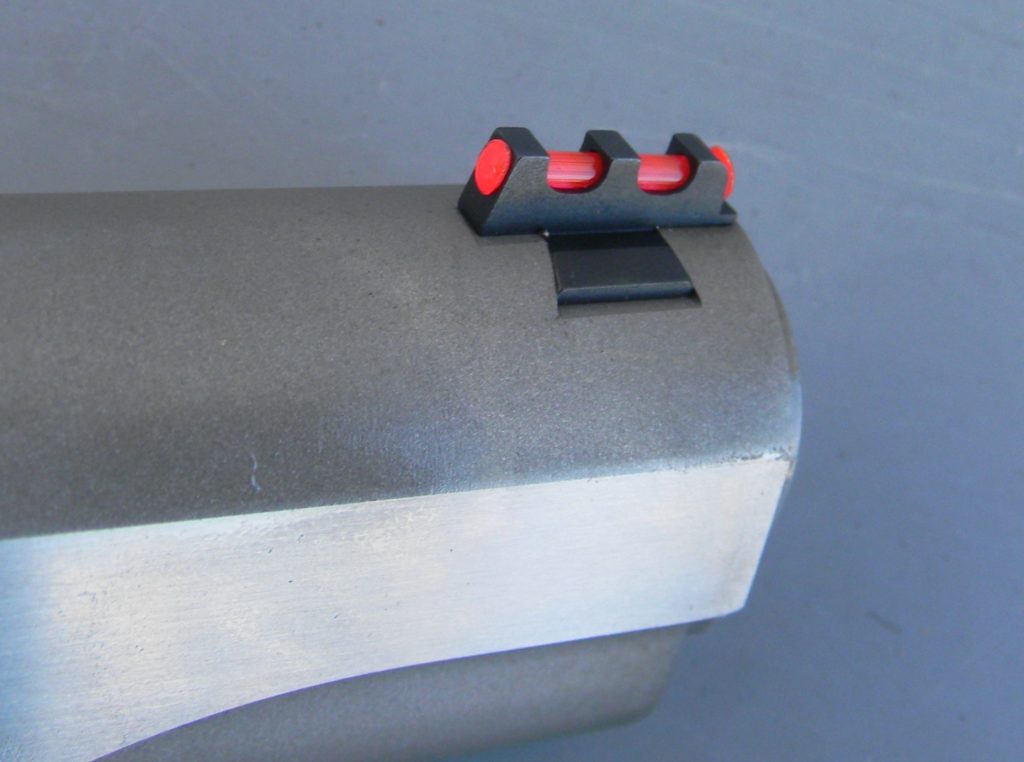
I chose a 9mm version for this evaluation after excellent results with an original Competetion Model in .45 ACP as well as a Series 70 Competition Model in the same caliber. The 9mm is after all readily available affordable and offers low recoil. This was proven after banking more than 200 cartridges in a single outing. I did not rub my wrists afterward nor feel jolted by recoil. The 9mm version isn’t as accurate as the .45 ACP, but it is quite accurate and very useful for many forms of competetion.
I am not one of those who will tell you that all handgun calibers are the same, equally effective for personal defense. That is a fantasy and poor science and research to say the least. Just the same, I no longer regard the 9mm with Olympian scorn. In general it may be said the .45 ACP hits twice as hard as the 9mm when full metal jacketed ammunition is used. Load the 9mm with a +P rated hollow point loading at 1,200 fps or and you have a formidable defense combination.
For competition use the 9mm is a fine caliber. Recoil management is much easier than the .45 ACP and in competetion this is all that matters. A big advantage of the Colt Competetion is the new dual recoil spring. This spring within a spring technology makes for less perceived recoil and apparently also enhances reliability.
After lubricating the bearing surfaces including the frame rails, slide ways, cocking block, barrel hood, and barrel bushing, I loaded the magazines with handloads for the initial workout. (I added a couple of new MecGar magazines from Cheaperthandirt.com)
Initial work was done with a load using the Hornady 124-grain FMJ and enough Titegroup powder for 1,100 fps. The pistol gets on target quickly and the front sight simply hangs on the bulls eye for repeat shots I fired at 7, 10, and 15 yards.
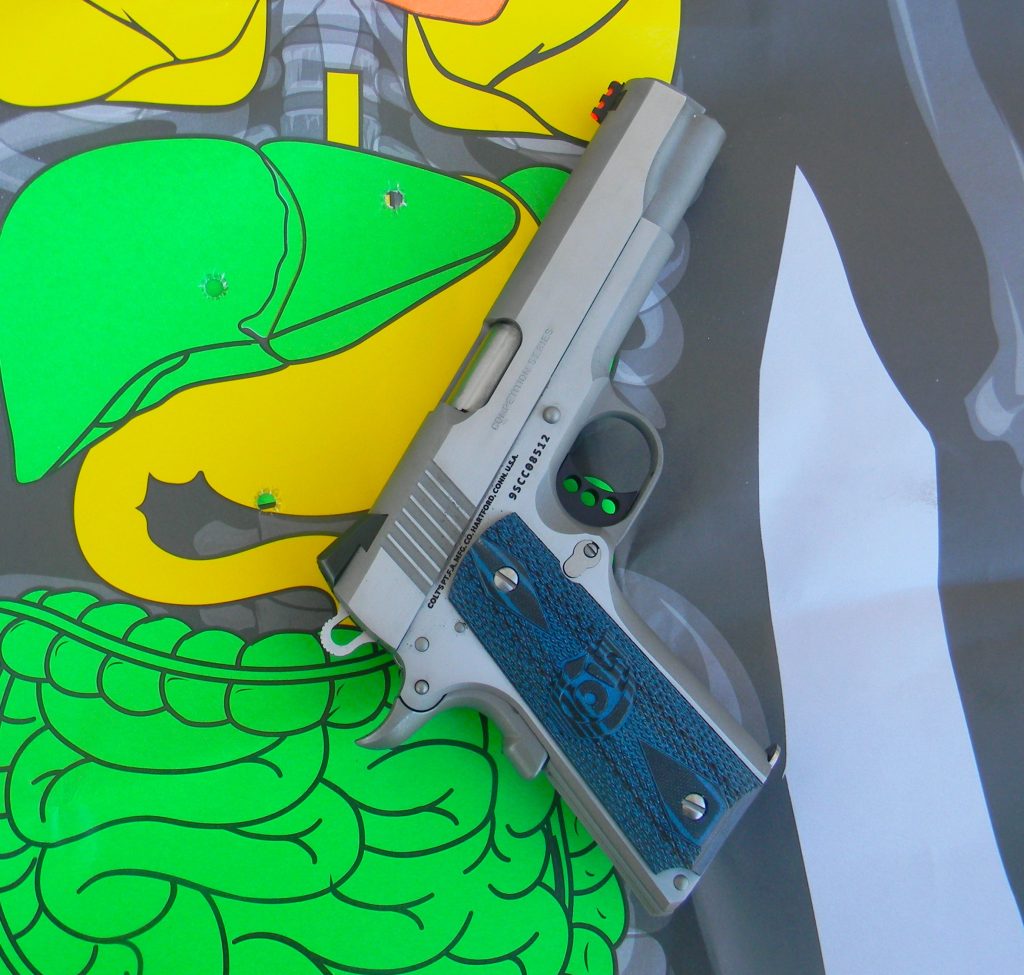
More than one hundred rounds were fired without a single failure to feed, chamber, fire or eject. I fired two more loads. Once is the Hornady 115-grain XTP at 1,100 fps, with W 231 powder, almost duplicating factory ballistics, and a maximum effort using the Hornady 124-grain XTP at a sizzling 1,270 fps. There was more push with the stronger load, but the pistol was not difficult to control- the opposite. A steel frame pistol this weight doesn’t recoil much even with a +P+ 9mm loading. Control is excellent. Speed loads were not difficult. This is a pistol well suited to many forms of competetion and personal defense as well. I found practical accuracy good. The pistol easily addresses multiple targets.
To access the pistol’s accuracy potential I fired from a solid rest at 25 yards. I used proven loadings and took every advantage for accuracy. The pistol performed well. Reliability and accuracy are beyond reproach. The Colt Competition Model 9mm gets a clean bill of health.
Accuracy result
Load 5 shot group at 25 yards
Hornady 115 grain Critical Defense 2.2 inch
Hornady 115 grain Hunter 1.5 inch
Hornady 124 grain XTP 1.9 inch
Black Hills ammunition 124 grain JHP 1. 75 inch
Black Hills 100 grain Honey Badger 2.0 inch
SPECIFICATIONS
COLT COMPETITION GOVERNMENT MODEL – SERIES 70
Caliber: 9mm Luger
Barrel length: 5 inches
Overall length: 8.5 inches
Weight: 36 ounces unloaded
Grips: G10 synthetic
Sights: Novak adjustable rear and fiber-optic front
Action: Single action
Finish: Blued
Capacity: 9 + 1 rounds
Price: Average $960.00



